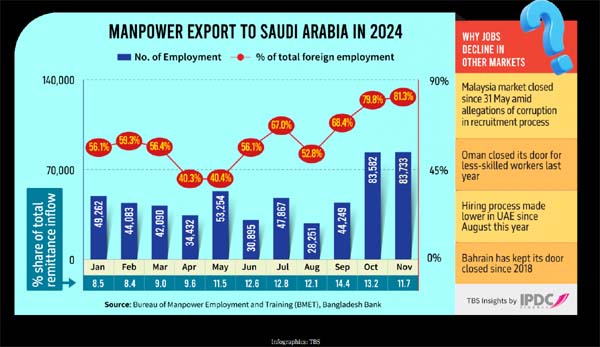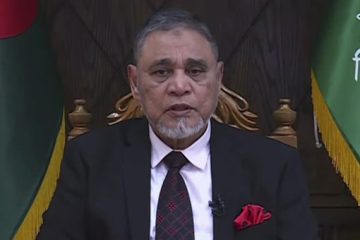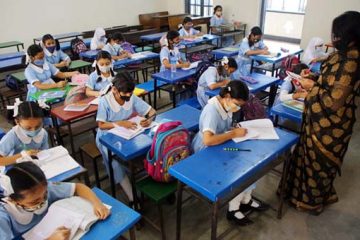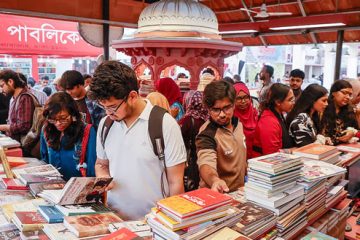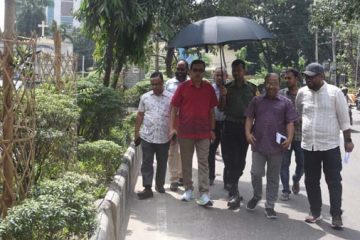Kamran Siddiqui
Saudi Arabia hired 83,733 Bangladeshi workers last month, marking the highest number of overseas employment in a single country in 35 months, driven by ongoing mega projects which indicate a further boost in demand for Bangladeshi labour.
While overseas employment in Saudi Arabia is surging, the demand for Bangladeshi workers in other labour markets has been declining in recent months.
According to data from the Bureau of Manpower, Employment and Training (BMET), Bangladesh sent 103,000 workers abroad in November, with Saudi Arabia alone accounting for 81%, which suggests a decline in job placements in traditional labour markets in the Middle East.
In an interview with TBS, Saudi Ambassador to Dhaka, Essa Youssef Essa Al Duhailan, said the oil-rich nation is hiring more workers from Bangladesh for its ongoing mega projects and Vision 2030 initiative.
“Saudi Arabia currently hosts over 3.2 million Bangladeshi migrant workers. We are gradually bringing more Bangladeshi workers to Saudi Arabia for many reasons. One of the key factors is the efficiency and hard work of Bangladeshis,” said the ambassador.
Saudi Arabia’s ambitious Vision 2030 initiative has spurred several mega-projects, such as the futuristic Neom city, the Red Sea Project, Amaala, and the development of an archaeological site AlUla. These projects are driving significant demand for foreign workers.
Traditional labour markets shrink
According to sector insiders, the decline in job opportunities for Bangladeshi workers in countries like Malaysia, the UAE, Oman, Qatar, Kuwait, Bahrain, and Jordan is attributed to factors such as irregularities in the recruitment process, an oversupply of workers, reduced demand for low-skilled labour, and political instability in Bangladesh since June.
In recent months, job opportunities have nearly vanished in key Gulf countries like the UAE and Oman, while Bahrain has not hired Bangladeshi workers since 2018.
The UAE has gradually reduced visa issuance, citing a preference for skilled workers and political instability in Bangladesh as factors behind the further reduction in August.
Bahrain halted Bangladeshi worker recruitment after a 2018 incident where a Bangladeshi national murdered an imam, leading to the deportation of many Bangladeshis.
Meanwhile, Oman closed its labour market in September due to an oversupply of workers caused by visa trading practices
Malaysia ceased accepting workers in May following major corruption allegations in the recruitment process, while job placements have also declined in Qatar, Kuwait, and Jordan.
White Paper findings on labour export issues
The White Paper, released on 2 December, highlighted a significant issue with Bangladesh’s overseas labour flow: its dependency on a single market at a time.
The report noted that countries which have long been key destinations for Bangladeshi workers often suddenly stop hiring or reduce intake.
Professor Tasneem Siddiqui, a member of the committee, identified malpractices in the visa procurement process as the primary cause of this instability.
“Some recruiting agencies issue visas without properly assessing the employers’ capacity. In many cases, embassy staff either fail to conduct proper background checks on the employing firms or are discouraged from doing so,” Tasneem Siddiqui, founding chair of the Refugee and Migratory Movement Research Unit (RMMRU), told TBS.
“Accountability is weak. There is a strong case for blacklisting recruiting agencies and outsourcing companies in destination countries that engage in unethical practices,” she added.
Some migration experts also argue that Bangladesh should reduce its over-reliance on Saudi Arabia by exploring new labour markets in Europe, focusing on producing skilled workers.
They also stressed the importance of reopening closed labour markets through diplomatic efforts, leveraging the global influence of Chief Adviser Muhammad Yunus.
Less remittance despite high employment in Saudi
While the number of workers going to Saudi Arabia has increased significantly in recent months, remittances from the country have been declining. By November this year, workers from Saudi Arabia sent $2.7 billion, while those from the UAE sent $4.5 billion.
Last year, the UAE was the top remittance-sending country, with $3.6 billion, while Saudi Arabia ranked second with $3.2 billion.
While Saudi Arabia recruited 60% of the total number of workers this year so far, the UAE hired only 5% as it closed its doors to most low-skilled workers in August amid political upheaval in Bangladesh.
Unofficial estimates place the number of migrants in the UAE at nearly 1.5 million, which is roughly half of Saudi Arabia’s total.
Mohammad Jalal Uddin Sikder, a migration expert and faculty member at the Department of Sociology at North South University (NSU), told TBS, “Due to the large number of workers in Saudi Arabia, the Bangladeshi network there is extensive, and many are coming with so-called free visas. However, many have been reporting that they are unable to find work, which is why they cannot send remittances.”
“On the other hand, the hundi (informal remittance channel) network is also strong, so the legitimate remittance flow is not reaching the desired levels,” he added.
He also mentioned the need to explore new labour markets in Europe by producing skilled workers to meet global demand.
White Paper committee member Tasneem Siddiqui said, “The low salary of Bangladeshi workers in Saudi Arabia is one reason for the low remittance, despite the presence of over three million migrants.”
She added, “Workers also face delays in getting their iqama (residency permit for work visa holders) because employers are hesitant to provide it due to high fees.”
A low-skilled Bangladeshi worker typically earns between Tk27,000 and Tk32,000 in Saudi Arabia, while the minimum salary in Malaysia is around Tk38,000.
Explaining the iqama issue, Saudi Ambassador to Dhaka Essa Youssef Essa Al Duhailan told TBS, “There is a contract between the recruitment agency in Saudi Arabia and the agency in Bangladesh. After a 90-day probation period, which allows workers and employers to assess their fit, workers will receive visas, and the iqama will usually follow within a week or two.”
“If workers face issues like unpaid salaries or missing iqamas, they can seek help through the courts, contact their embassy, or work with Saudi authorities to protect their rights,” he added.
Top markets after Saudi Arabia
After Saudi Arabia and the UAE, the top destinations for Bangladeshi workers are Malaysia, Oman, Qatar, Kuwait and Bahrain.
In Saudi Arabia, the number of Bangladeshi workers was 457,000 in 2021, 612,000 in 2022, 497,000 in 2023 and 541,000 this year, according to BMET data.
In recent years, job numbers in the UAE have decreased. The country hired 101,000 workers in 2022, 98,000 in 2023 and 47,000 this year.
Oman hired 179,000 workers in 2022, 127,000 in 2023 and only 333 this year after closing its labour market.
Malaysia hired 350,000 workers last year, but this number dropped to 93,000 after its market closure.
Migration expert Mohammad Jalal Uddin Sikder said that recruitment depends on development activities in a country, like mega projects, and fluctuates from year to year.

